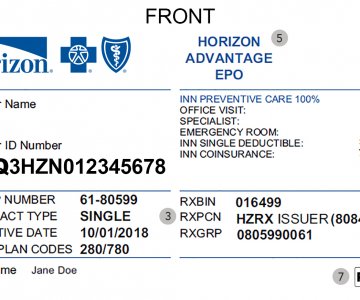how how long do you have health insurance after leaving a job can save you time stress and money

However that scenario has actually changed significantly because then, with a growing number of insurance providers dropping this form can timeshare ruin your credit of insurance coverage from their list of product offerings because of the spiraling costs of long term care. Oftentimes, insurance providers have actually been required to raise the premiums on their policies or even cease the coverage on them in an effort to keep up with this progressively pricey type of care. Long term care policies will generally only cover expenditures approximately a specific quantity for a particular time period. For example, a policy may pay the first $400 of expenses daily for a period of 2 or three years.
Obviously, policies that provide higher quantities of protection will cost more than policies with lower limitations. The answer to whether carrying long-lasting care insurance protection deserves it comes down to a few different aspects. For those who receive Medicaid, this is most likely not a sensible purchase, as it will efficiently disqualify them from this program. For that reason, if you earn less than $22,000 a year, then a long term care policy is not likely going to suit your budget and you will be much better off attempting to qualify for Medicaid. And those who are lucky adequate to be able to self-insure are most likely much better off doing so.
However the majority of long term care policies also have a waiting period of a minimum of 90 days (which functions as a deductible), and over half of all senior citizens who require care will only need it for less than 90 days. This can be tough to swallow for many insureds, particularly considering that they Click here might be paying around $2,000 a year for their coverage. And the typical waiting period is typically 90 days for a lot of policies. Longer terms of protection, much shorter waiting durations and the more generous inflation riders will of course raise the expense of the premiums. But if you feel that there's an excellent opportunity that you may require to remain in a nursing care facility for a longer time period, then these extra advantages may deserve the money.
Go into life settlements, in which senior citizens offer unwanted life insurance policies and receive a cash windfall that can be used for long-term care needs. Not every private qualifies for a life settlement, but declining health can often increase the odds that a settlement will agree with. To learn whether you or your loved one could pursue a life settlement, try Magna's life settlement calculator, or schedule a call with among our specialists today.
Long-lasting care comes at a substantial cost to many retired people residing in the US.Long-term care insurance covers costs associated with at home help, helped living centers, and nursing house care, which aren't covered by Medicare. If you think you'll need aid paying for long-term care, it's recommended to buy a policy in between ages 52 and 64 to protect the best rates. Long-lasting care insurance usually kicks in anywhere from 30 to 90 days after eligibility is verified and will pay a day-to-day benefit amount as much as a maximum variety of days or amount of cash. Healthcare is the biggest expenditure most senior citizens deal with.
As of 2016, a semi-private room in a retirement home costs, usually, $6,845 a month, according to the US Department of Health and Human Solutions, while a completely private room will set you back about $7,700 a month. A one-bedroom unit in a nursing home costs around $3,630 a month and an at home health aide charges about $20. 50 an hour, on average. Even if these costs seem manageable at face worth, they can accumulate significantly. Scientists from the Urban Institute estimate that more than half of Americans over age 65 will develop an impairment that needs long-lasting take care of two years or less at an average total cost of $138,000.

5 Simple Techniques For How Much Is Renters Insurance
Long-lasting care insurance coverage can assist lessen these costs. Long-lasting care (support beyond 100 days) is typically not covered by Medicare since it's thought about custodial care and not medical care. While Medicaid does cover long-lasting look after millions of Americans, there's an incredibly low income limit to qualify. Long-lasting care (LTC) insurance can help retirees who don't want to invest down their You can find out more properties to certify for Medicaid pay for the cost of an at home caretaker, or a remain at an assisted-living center, skilled nursing facility, or assisted living home. Like all other kinds of insurance, when you purchase an LTC policy and begin paying the regular monthly premium, you become entitled to the benefits.
Serious cognitive impairment that increases the policyholder's health and safety threat also qualifies. Each policy has an elimination duration, which mentions the number of days the insured should wait to receive advantages after the insurance provider determines they're qualified. A common removal period is 30, 60, or 90 days. The amount of money the policyholder will be compensated for is referred to as the day-to-day limitation. This is described in the policy and typically around $150 a day or more. How to cancel geico insurance. The insurer will continue paying the daily benefit as much as an optimal variety of days, usually a period between 2 years and 10 years, or as much as a defined quantity of cash.
However if you're concerned about the expenses of senior care and know your own savings or assist from family will not cover it, it's an excellent concept to get long-lasting care insurance coverage. According to the US Department of Health and Person Services, those more than likely to need long-term care are females, because they statistically outlast men and in lots of cases wind up at home alone; people with chronic diseases that result in special needs; individuals with a bad family health history; individuals with bad diet plan and workout routines; and people with a persistent condition like or. The longer you wait to buy long-lasting care insurance coverage, the more pricey it is.
The American Association for Long-Term Care Insurance advises buying a policy in between ages 52 and 64 for the best rates. A single male in good health will pay about $2,050 year, typically, while a single female will pay $2,700 each year, according to the company's data. For a couple aged 55, the typical annual premium is around $3,050. It is essential to keep in mind that insurance companies reserve the right to increase your premium after you buy the policy, as long as they do it for all insurance policy holders in the exact same classification. Individuals who already need aid with any qualifying daily activities, have had a stroke in the last a number of years, or have dementia, a progressive neurological condition, AIDS, or metastatic cancer may be rejected long-term care insurance coverage.
It pays to search and compare quotes online, but make certain to constantly examine an insurance provider's rankings before purchasing a policy to get an idea of its claims payout history and performance history. LTC insurance coverage can get made complex, so you may thinking about getting help from an insurance coverage broker or qualified financial planner to make certain you're picking the ideal policy for your requirements. Your company may also provide long-lasting care insurance at a group rate, which is often less expensive than the expense of a private policy. How much is homeowners insurance.


Ingen kommentarer endnu